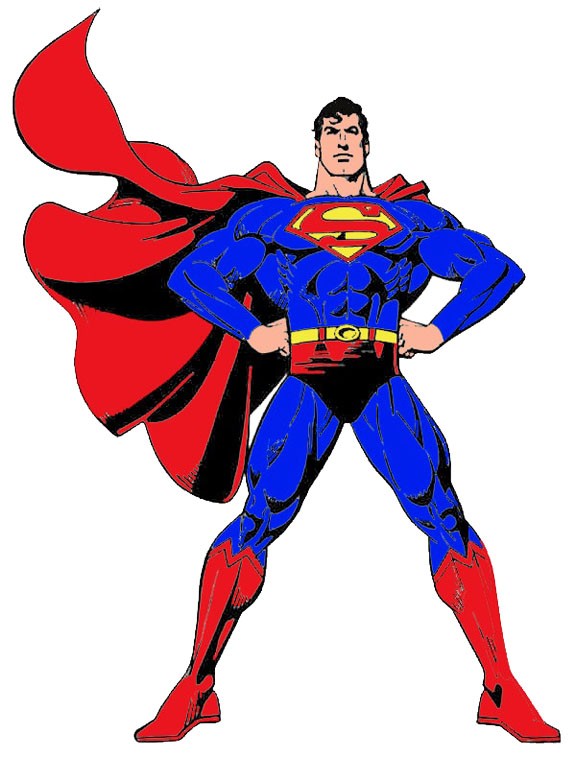Movies now move at the speed of the Marvel Cinematic Universe. The past decade marks the takeover of the modern blockbuster by way of the superhero, with Disney’s Marvel franchises leading the charge.
“The Avengers” films both grossed well over $1 billion in box office revenue, highlighting Disney’s latest method of printing money: the superhero movie. Few film franchises can boast the title of “universe,” but the Marvel Cinematic Universe does.
It’s Marvel’s universe, and we are all just living in it. A pop culture takeover of such magnitude begs the question: how did this happen? Pima County Public Library’s summer series, The History of the Superhero in Film, provides an origin story for the latest pop culture craze.
Every Monday from 1-4 p.m. at Joel D. Valdez Main Library, Lauren Hebert, Pima County Public Library staff member, leads attendees on a journey through The History of the Superhero in Film. Examining cinematic classics such as “Superman” (1978) and “Batman” (1989) leads to discussions centered around the effect of these films on culture. The Batman versus Superman argument will continue until the end of time, and Hebert chose to juxtapose the two films.
As an art historian, Hebert takes an academic approach of examining the films as a text, encouraging teens and other attendees to seriously examine pop culture.
“[Batman] challenges ideas about what a superhero is and what is required to be one, and also challenges the easy morality of characters like Superman by making his choices more complicated,” Herbert said. She added that pop culture often reflects the social consciousness of the masses, in this case through the narratives of superheroes.
As made famous by Uncle Ben from “Spider-Man,” superheroes live by the sage cliché, “With great power comes great responsibility.” Superheroes hold the fate of the world, and often the entire universe, in their hands. The choices they make reflect their values and principles. Many iconic superheroes, such as Superman and Captain America, rigidly maintain their status as Boy Scout goodie two-shoes.
Others like Batman and Iron Man live in a world of moral gray guided by a personal code. Still others challenge the moniker of superhero by making choices that reflect self-interest rather than selflessness. 2014 hit “Guardians of the Galaxy” proves a band of untamable misfits with sketchy morality can still get the job done and save the day.
“Guardians of the Galaxy” indicates just how far superheroes have permeated pop culture. Before its announcement, The Guardians of the Galaxy were considered minor comic book heroes at best, and downright unknown at worst. Yet, despite the unfamiliarity of its heroes, “Guardians of the Galaxy” grossed three quarters of $1 billion. Such success indicates both the power of the Marvel brand and the saturation of the superhero market. Slapping the Marvel logo on a film now guarantees box office success, which in turn leads to more and more films.
Marvel breaks down its schedule of films into three phases spanning until 2019. Phase Two concludes this fall with “Ant-Man,” and Phase Three kicks off with 2016’s “Captain America: Civil War.” Superheroes have even spread to the small screen with Marvel and DC Comics both sporting three current shows and more in the pipeline. Next summer marks the clash of DC titans in “Batman v. Superman: Dawn of Justice.”
The rivalry between Marvel and DC extends to the big screen, even with the recent shift in dominance skewed toward Marvel. This year marks the 10th anniversary of “Batman Begins,” the DC reboot of “Batman” that Christopher Nolan shaped into gritty, realistic blockbusters. The grim nature of the DC films contrasts the classic comic book colors that provide the palate for Marvel films. Since the first Marvel Cinematic Universe movie “Iron Man,” Marvel has stayed one step ahead of DC. Case in point: “The Avengers.” The teaming up of the Avengers came a full five years ahead of the scheduled Justice League film still to come in 2017.
No one knows what the future holds when Marvel’s Phase Three concludes and DC’s second Justice League film releases in 2019. Between the numerous films, official comic books and television series, it seems inevitable that society will run into superhero fatigue before 2019. Until then, superheroes show no sign of slowing down. History tends to repeat itself, and The History of the Superhero in Film at Joel D. Valdez Library provides a leg up to prospective superhero historians.
_______________
Follow Alex Furrier on Twitter.









